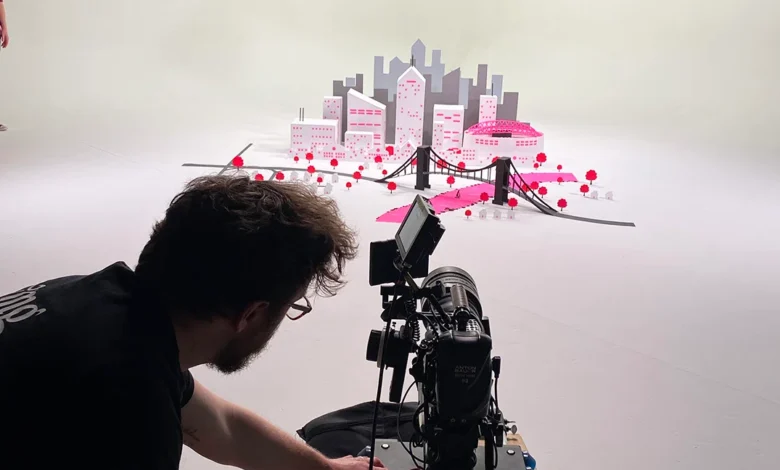Video Marketing Production Costs: What to Expect and Budget For

Video marketing is a vital tool for modern brands, with over 80% of businesses using video to drive engagement, conversions, and brand visibility. However, production costs can vary dramatically, posing challenges for marketers planning budgets. From low-budget DIY projects to high-end corporate campaigns, understanding cost drivers and strategic budgeting is crucial for creating impactful content in 2025. This article explores the key factors influencing video production costs, provides budget ranges for various approaches, and offers practical strategies to maximize value, ensuring your investment yields strong results.
The Range of Video Production Costs
Video production budgets span a wide spectrum, from a few hundred dollars for simple projects to over $100,000 for premium campaigns. Costs depend on factors like project complexity, production quality, and team expertise. Generally, budgets fall into three categories:
- Low-Budget (DIY or Freelance): $300–$2,000 per video, ideal for small businesses or basic social media content.
- Mid-Range (Professional Freelancers or Small Teams): $1,500–$8,000 per video, suitable for startups and SMBs seeking professional quality.
- High-End (Agencies or Large Productions): $8,000–$50,000+, typical for enterprise brands or complex projects like commercials.
These estimates are for a one-minute video, as costs scale with length. For example, a 60-second ad might average $1,200–$2,200 per minute for mid-range productions, while high-end videos can reach $4,000–$7,000 per minute.
See also: Mastering Electrician Training: Your Path to Professional Excellence
Key Cost Drivers in Video Production
Production costs are shaped by three phases—pre-production, production, and post-production—each with distinct expenses. Breaking these down helps marketers allocate resources efficiently.
Pre-Production: Setting the Stage
Pre-production involves planning, including concept creation, scripting, storyboarding, and logistics. Costs vary based on the level of detail and expertise required:
- Scriptwriting: A professional writer charges $40–$200 per hour. A 60-second script typically takes 2–4 hours ($80–$800). Complex narratives with multiple drafts increase expenses.
- Storyboarding: $60–$150 per hour, usually 2–6 hours ($120–$900) for a one-minute video. Detailed visuals for animation or cinematic shoots raise costs.
- Location Scouting and Permits: Public spaces are often free, but private venues or studios cost $80–$400 per hour, with permits adding $40–$800 in urban areas.
- Casting: Local talent charges $40–$400 per hour, while high-profile actors can demand thousands. Using employees or volunteers cuts costs but may reduce polish.
Pre-production typically accounts for 15–20% of the budget. Thorough planning prevents costly revisions later.
Production: Filming the Vision
The production phase—capturing footage or creating assets—is the most expensive, driven by crew, equipment, and logistics:
- Crew Size: A small team (videographer, sound tech, director) costs $400–$1,500 per day. Larger crews with specialized roles like producers can exceed $4,000 daily. Rates vary by region, with urban areas charging $25–$300 per hour per role.
- Equipment: Basic setups (smartphone, tripod, microphone) cost $80–$400 to buy or rent. Professional gear (cinematic cameras, lighting, drones) ranges from $400–$4,000 per day. For instance, a $40 microphone boosts audio quality, while a $120 ring light improves DIY visuals.
- Locations and Sets: Office shoots are low-cost, but custom sets or rentals (e.g., studios, homes) add $400–$4,000 per day. Props or set design for authenticity can escalate expenses.
- Talent: Wardrobe, hair, and makeup add $80–$800 per day. Specialized styling, like for character-driven ads, increases costs.
- Shoot Days: Each day incurs crew, equipment, and location fees. A one-minute video may need 1–2 days, with complex projects requiring more. Efficient scheduling saves thousands.
Production consumes 50–60% of the budget, making streamlined planning critical.
Post-Production: Crafting the Final Product
Post-production polishes raw footage, with costs tied to editing, effects, and audio:
- Editing: $40–$120 per hour, with a one-minute video needing 4–15 hours ($160–$1,800). Complex edits, like adding B-roll or color correction, extend time.
- Visual Effects (VFX): Simple effects, like removing objects, cost $80–$400. Advanced effects, such as 3D animations, range from $800–$8,000 per minute.
- Animation: Animated videos cost $800–$40,000 per minute. Simple 2D explainers average $1,200–$2,000, while 3D animations hit $4,000–$6,000.
- Music and Voiceovers: Royalty-free music costs $40–$120 per track, while custom tracks or licensed songs can run thousands. Voiceovers range from $80–$400 per minute, with multilingual versions adding 5–10%.
- Revisions: Multiple feedback rounds can double editing costs. Clear initial direction limits revisions.
Post-production accounts for 20–25% of the budget, with animation-heavy projects costing more.
Budget Ranges by Video Type
Different video styles align with specific goals and budgets:
- Explainer Videos: $1,200–$6,000 for a 60-second clip. Simple 2D animations cost $1,200–$2,000, while live-action or 3D visuals reach $4,000–$6,000. Ideal for product demos or tutorials.
- Social Media Ads: $700–$3,500 for 15–60 seconds. Short clips using templates or stock footage cost $1,200–$2,000, while live-action with custom sets hits $3,000–$3,500.
- Testimonial Videos: $1,500–$2,500 for a one-minute clip. Single-location shoots with real customers are affordable, while stylized testimonials cost $4,000+.
- Brand Story Videos: $3,500–$15,000 for 1–3 minutes. These demand cinematic visuals or professional talent for emotional impact.
- Event Videos: $1,000–$8,000 for 1–2 minutes. Costs vary based on event scale and editing complexity, like multi-camera setups.
Select a style that matches your goals and budget, prioritizing impact over volume.
Strategies to Optimize Your Budget
Maximize your investment with these cost-effective approaches:
Clarify Your Goals
Define the video’s purpose—awareness, engagement, or sales—and target audience early. A clear brief prevents scope creep, which can increase costs by 30%. Share example videos to align expectations with your team.
Use In-House Resources
Leverage employees, office spaces, or basic equipment like smartphones to cut costs. A $25 tripod and $40 microphone can produce decent DIY videos. Free editing tools like CapCut work for simple projects.
Incorporate AI Tools
AI platforms for video creation or editing can reduce costs by up to 80% for basic content like training videos. These tools allow in-house teams to produce professional results without large crews.
Negotiate with Vendors
Request detailed quotes from freelancers or agencies, and bundle services like scripting and editing for discounts. Repeat clients may secure 20–30% off for multiple projects.
Streamline Shoots and Revisions
Plan shoots to minimize crew and location time. A one-day shoot for a 60-second video can save thousands. Limit revisions to 1–2 rounds by providing precise feedback upfront.
Repurpose Footage
Stretch your budget by turning one shoot into multiple assets, like social clips or website videos. A $3,500 video can yield dozens of micro-videos, boosting ROI.
Selecting the Right Production Partner
Choose a partner based on your budget and needs:
- DIY: Under $400. Use smartphones and free tools for quick content, but expect basic quality. Best for informal social media posts.
- Freelancers: $400–$3,000 per video. Freelancers charge $10–$20 per hour, offering flexibility but limited resources. Review portfolios to ensure quality.
- Agencies: $1,500–$40,000+. Agencies deliver polished results with full-service support, ideal for complex projects. Seek transparent pricing and relevant experience.
Startups and SMBs can target $900–$3,000 for quality, while enterprises may budget $4,000–$7,000 for premium results.
Measuring Return on Investment
Video marketing offers strong returns, with many businesses reporting increased conversions from landing page videos. Track metrics like views, engagement, clicks, and sales to assess value. For example, a $3,500 video driving $15,000 in revenue justifies the cost. Focus on metrics aligned with your goals to ensure accountability.
Looking Ahead to 2025
In 2025, production costs are more accessible due to remote workflows and AI tools, reducing expenses by 10–20%. Marketers are increasing video budgets, prioritizing short-form content for platforms like Instagram and TikTok. By setting clear objectives, leveraging cost-saving tools, and choosing the right partners, you can create impactful videos that deliver results without overspending.




